Entries in Wind farm construction (20)
11/29/10 Wind Farm Strong Arm: Wind developers hire cops to police 'open house' AND Why all the secrecy about what went wrong with the turbine foundations? AND Green stimulus grant includes get out of jail free card for known Wisconsin Polluter
WINDMILL SECURITY OVERKILL: Residents-- Northumerland
Source: NORTHUMBERLAND TODAY, www.northumberlandtoday.com
November 29, 2010
By VALERIE MACDONALD,
ROSENEATH -- The security was high at an open house at the Alnwick Civic Centre held for a proposed local wind farm Friday night.
Not only was there a police cruiser sitting outside -but there were at least three OPP officers on duty but out of uniform, about a half dozen uniformed security guards and another security man in plain clothes, as well as video surveillance. A sign warned about the latter and suggested people leave if they didn't want to be videotaped.
This is overkill, said several meeting attendees from the local, anti-wind turbine group, Alliance for the Protection of the Northumberland Hills.
"It's threatening," agreed Debbie Lynch, a woman who is also protesting another proposed industrial wind turbine development in Central Ontario where she lives near Norwood.
There were other concerned citizens from the Clarington, Pontypool and Millbrook areas, where wind farms are also being pursued under the rules set by the Ontario's Green Energy Act . The resulting green power will be subsidized in the form of a high per kilowatt hour "feed in" rate into the Hydro One electrical grid over the term of a 20-year contract for proponents who meet all the government-imposed criteria.
The government policy is to increase green energy and bring manufacturing jobs to Ontario as it imposes increasing Ontario content rules on the infrastructure installed for wind, solar and other energy-producing alternatives.
OPP Sgt. Jeff Lavalley, who identified himself as head of the OPP Aboriginal Policing Bureau, said officers were there to "be informed about what's going on" in relationship to the series of meetings in the area about different proposed wind farms. While not in uniform, he stressed they were not "plain-clothed" police officers.
"There have been incidents at other venues," he said. These "incidents" included intimidation and threats, particularly at the Millbrook wind turbine meeting, the Sgt. added.
Among those groups being consulted as part of the approvals process to install turbines under the Ontario Green Energy Act are First Nation peoples, said wind turbine company spokesperson Larissa Murray in an interview. There was one man escorting her everywhere she went in the Alnwick Civic Centre during the meeting.
Murray identified herself as vice president of Tantenco LLC of Delaware whose parent company is in Germany where she has lived for a number of years before beginning her career in the wind power business. Tantenco and Sunbeam LLC of the U.S. each have 50% ownership of Clean Breeze Wind Park LP (Limited Partnership), identified as the proponent for the development that was subject of Friday night's meeting. The two U.S. firms are the financial backers, she also said.
If local ownership can be increased to a minimum of 50% in the windpark, the payback on power produced through the Ontario government backed plan will rise to 14.5 cents per killowatt hour from 13.5, she said. Local investors will be sought in the future, Murray said. Studies are being conducted ranging from noise and wind assessments to the proximity to wetlands, woodlands and residences, she said. This information will be made public at least 60 days before the second public meeting, Murray added.
If there is no lease with a landholder, however "I can't put up a turbine," she said.
The local project area is bordered by County Road 22 on the north, County Road 23 on the west, just east of County Road 45 on the east, and south along Norble Road and Scots Line. A FITT contract for up to 10 megawatts of power production would be met by up to five turbines and cost about $20 million to put in the ground and wire into the grid, Murray said.
Energy Farming Ontario is a consulting firm on the local project and "some of its staff own equity" in Clean Breeze Wind Park, Murray explained. M.K. Ince & Associates Ltd. is the consulting firm overseeing the studies that are underway, holding the required public meetings and undertaking the renewable energy approvals process, she said.
A common factor in all of the 10 proposed wind turbine farms in Ontario is that M.K. Ince & Associates is undertaking the approvals process confirmed local project manager for the firm, Andrea McDowell. Half of those are in Central Ontario.
The field work for Clean Breeze Wind Park has been completed, said M.K. Ince & Associates spokesperson Jane Zednik but not all the studies. She said that they would be completed and made public in time for the second required public meeting which she expected to be held April, 2011. They will be available on the web site energyfarmingontario. com and at public libraries, Zednik said.
At this stage in the process the design has not be completed, where the lines will be buried or on poles, the location of the turbines, access roads, etc., Zednik said. One company representative said there would be a total of five turbines and another said that wasn't decided yet.
Morely Nelson has already told Northumberland Today that he has an agreement with Clean Wind Park to allow the company to put up wind turbines on his property, and that of his brother Ken. He said he lives on the property and has done his own research at other wind farms and is satisfied with what he found.
The Alliance for the Protection of the Northumberland Hills, however, is not of the same mindset.
They have warned potential landowners contemplating entering into long-term leases for wind turbines that there are downsides. They have issued newsletters and visited their neighbours. At the meeting they distributed a bulletin entitled: "What you should know about wind turbines."
The document stated that property values could be devalued by "at least 25%" and that those selling properties could wait twice as long to find a buyer if their land is in the vicinity of wind turbines.
"Concerns over noise, health affects, value loss and destruction of rural views stigmatize areas, chasing away buyers," the Alliance's statement warns.
Property reassessments are supporting this claim and it cites an appeal board decision in Amaranth Township where the assessment was cut in half by an appeal board.
Alliance member Tyne Bonebakker lives within the study area of the proposed local windfarm and he says the provincially mandated 550 meter setback from wind turbines is inadequate.
Another person who would be directly affected if the project went ahead is Denise Little who told Murray she is concerned that her retirement home will be ruined because of the project. In an interview Little said she is the type of person who gets migraines and will likely be susceptible to the ill affects that other people say they have suffered by living close to wind turbines.
These include a low-frequency noise and shadow flicker, to a strobe effect, according to the Alliance's bulletin. It claims nausea and dizziness as side effects.
"Our group is one of more than 40 citizens' groups throughout Ontario. More than 60 municipalities in Ontario have challenged the Green Energy Act and are asking for a halt to industrial wind turbine developments," the bulletin also states. The group believes more health studies need to be undertaken and that what has been done so far is inadequate.
Opposition is world wide, the anti-wind turbine group's literature also stresses.
But Murray says she has grown up with wind turbines and isn't negatively impacted by them. Europe has had them for over 30 years, she said.
Alnwick/Halidmand Mayor Elect Dalton McDonald says he lives next door to the proposed site and neither he nor his wife have concerns, even though he believes they'll be able to see them when they take walks on their property.
He noted, however, that the Green Energy Act passed by the provincial government takes away any regulating power from municipal governments.
"I can have no more impact (on any decisions) than anyone else," McDonald said.
SECOND FEATURE
PUBLIC SOULD GET ANSWERS ON WIND FARM
SOURCE: UticaOD.com
Secrecy swirling around the sudden disruption in construction of Herkimer County’s first wind farm should outrage residents in Fairfield and Norway, and they should be demanding clear answers from town leaders.
Iberdrola Renewables halted turbine construction earlier Nov. 12 to perform more tests after it discovered concrete used in the some of the foundations was weak and did not meet company standards. Work resumed Nov. 19 after some tests were completed and, Iberdrola says, foundations now meet or exceed its standards. Further results are pending.
But little is known about what happened, how it was corrected and whether it could happen again.
• Iberdrola spokesman Paul Copleman would only respond to O-D inquiries by e-mail. He declined to release the names of the project’s contractors or discuss whether all current contractors would remain on the project.
• The project is small by standards set that require state oversight. The state Public Service Commission regulates wind energy projects of 80 megawatts. The Hardscrabble project falls just six megawatts shy of that. That puts regulation in the hands of local officials, PSC spokesman Jim Denn says.
• Town supervisors won’t talk. Neither Fairfield town Supervisor Richard Souza nor Norway town Supervisor Judy Gokey returned phone calls. Meanwhile, Stephanie Vetter, an environmental engineer assigned to the project, would not comment on the recent problems. She directed questions to town officials.
This is unacceptable. The Hardscrabble Wind Farm is slated to place 37 turbines in Fairfield and Norway. If the project fell within the parameters of state law, the state would have the authority to step in and conduct an investigation. But since oversight of smaller projects rests with the locality, the onus is on local officials to provide answers.
If Norway and Fairfield leaders know details of the incident and how it has been corrected to assure the public safety, they need to be upfront with that information. If they aren’t aware of what happened, they need to demand a full accounting from Iberdrola and then share that information with town residents.
We often complain about lack of autonomy and overregulation by big government, but when localities are given that responsibility and officials fail to carry out their duties or stay mum, the public is shortchanged. Don’t let that happen here. Ask questions and demand answers.
THIRD FEATURE
Wisconsin Firm Receives Energy Grant Despite Chronic Pollution Problems
SOURCE: Center for Public Integrity
By Kate Golden | November 28, 2010
Last December, when Wisconsin Gov. Jim Doyle announced $14.5 million in federal stimulus funds for energy-efficiency projects involving nine companies, he called it “a tremendous opportunity to be one of the greenest manufacturing states in the country.”
What Doyle did not mention was that ethanol producer Didion Milling Inc., which got $5.6 million and the largest share, is one of Wisconsin’s most chronic air and water polluters— a firm designated by the federal government as a “high priority violator.”
Less than a month before Doyle’s announcement, a federal judge ruled that Didion — headquartered in Johnson Creek, Wis. — had violated the federal Clean Water Act numerous times in 2008 and 2009. Among the violations: use of excessive amounts of chlorine and other chemicals, and the discharge of a murky yellow liquid with solids down a company wastewater pipe into a tributary of a fishing lake. The ruling came in a lawsuit filed by residents who lived near the company’s Cambria, Wis., plant, about 45 miles northeast of Madison, the state capital in central Wisconsin.
The company also settled a state lawsuit in April by agreeing to pay $1.05 million for 23 air and water claims that stretched from 1999 to 2010 — a move that effectively ended three federal lawsuits filed by residents living near the plant.
Documents obtained by the Wisconsin Center for Investigative Journalism under open records laws show that officials evaluating Didion’s application for a U.S. Energy Department stimulus grant did not ask about — and Didion didn’t disclose — details of its environmental compliance record.
And once it won the grant, Didion’s project was exempted from having to conduct an analysis of its environmental impact as required by the National Environmental Policy Act — just like 99 percent of the $33 billion in stimulus projects funded by the Energy Department, according to an investigation by the Center for Public Integrity, a nonprofit investigative news organization in Washington and the Wisconsin Center for Investigative Journalism, a nonprofit based in Madison.
Doyle’s office did not respond to e-mail and phone messages seeking response.
Didion’s vice president of operations, Dale Drachenberg, declined to address questions about the company’s environmental record or the process that led to the grant. Instead, he issued a statement touting the job-creation and clean energy benefits of the stimulus-funded project.
“Since the day we started construction on our ethanol production facility, we’ve made innovation and conservation top priorities,” Drachenberg said.
On its website and in statements, Didion has cast itself as an eco-friendly company. It was one of 50 companies that in August won a grant from the state Department of Commerce’s Wisconsin Profitable Sustainability Initiative to examine and reduce its waste streams. And in September, the company hosted a Green Energy Expo at the Cambria plant, where people could learn about recycling, energy conservation and the future of alternative fuels.
To Karen Dettman, who lives across the street from Didion and has lived with its spills, smells, noise, traffic, and murky discharges, the company’s federal grant is “green energy at any cost.”
Environmental advocates in Wisconsin also believe federal and state regulators should have taken companies’ environmental into account before awarding stimulus grants or NEPA exemptions.
“You’d think it would be a normal part of the check, whether they’re in compliance with environmental laws. That’s a phone call or two at the most,” said George Meyer, a former Wisconsin Department of Natural Resources secretary who is now executive director of the Wisconsin Wildlife Federation, a nonprofit environmental advocacy organization.
Consultants working for the state’s Focus on Energy program acknowledged they recommended Didion’s plant-expansion proposal for a grant without considering the company’s past environmental problems.
Focus on Energy, established by the Wisconsin Legislature to encourage renewable energy and energy efficiency, worked through a private contractor, CleanTech Partners of Middleton, Wis. Focus on Energy solicited applications from Wisconsin industries for federal energy efficiency stimulus grants. CleanTech picked nine, bundled them up and sent them off to the Energy Department.
CleanTech got about 25 applications — from paper companies, a lawnmower engine manufacturer and others — and winnowed the field using American Reinvestment and Recovery Act and Energy Department criteria: whether the project would preserve or create domestic jobs, how the project would be managed, how much it would cost and the potential energy savings.
Didion proposed to install a host of new technologies at its Cambria plant that would produce more ethanol from corn with less energy usage, thus allowing the company to expand production. The new technology would also extract a new product in the process, corn oil, to get more value out of the corn.
The Energy Department grant money, matched by Didion’s utility, Alliant Energy, would help the project pay for itself in 3.9 years, according to Didion’s application. It would save 11 million kilowatt-hours of energy — enough to power 828 homes for a year.
Past pollution never came up, said Thomas Reitter, a consultant for CleanTech, who worked on the applications for Focus on Energy. The only environmental issue he addressed was to make sure companies fully filled out DOE’s boilerplate environmental questionnaire. “It’s DOE’s evaluation,” he said.
The questionnaire is designed to help the Energy Department decide whether a project should trigger a detailed environmental review under the National Environmental Policy Act, or NEPA. Such reviews can take months or even years to complete.
The form asked questions including what permits would be required, how solid waste would be hauled and what emissions would result. But nothing in the 12-page form asks firms about their compliance history.
And Didion did not offer much information in response to several of the queries.
“Describe any issues that would generate public controversy regarding the project,” the form says.
Didion checked “None.”
“Summarize the significant impacts that would result from the proposed project,” the last question on the form states, asking for details.
Didion left that one blank.
If federal officials who approved the stimulus grant had examined Didion’s record, they would have found a lengthy list of violations.
Aside from the 2009 Clean Water Act lawsuit, a second group of residents sued Didion last year under the federal Clean Air Act for years of air violations that the state had documented — but for which it had never punished the company.
Those and many other violations dated back to 1999. Among them: Didion built 15 grain silos, three mills, and a grain dryer without applying for the required air pollution permit. The company exceeded emission limits and ran a grain dryer outside permitted times. And it falsely claimed on a permit application that it was complying with the law, according to court records.
A U.S. Environmental Protection Agency database shows Didion has received 11 notices of violation in the past five years — one of the most among all Wisconsin companies. The notices signify that state regulators believe they have solid evidence the company has broken the law, and they are the first step toward punishing the company with a formal enforcement action.
“It’s highly unusual for us to have a source that we’ve sent this many notices of violation to,” said Tom Roushar, DNR air management program supervisor for the region. “Usually if we send one, the source corrects it, and we don’t have to repeat it.”
In late 2009, while the governor was trumpeting the grant for Didion, the state Department of Justice was taking the company to task. Assistant Attorney General Steven Tinker alleged in a letter before it sued Didion that the company had racked up thousands of air permit violation-days, a measure of the number of days that each violation continued, though the total number was never counted in the Columbia County Circuit Court case that followed.
In March, the state sued Didion, and the two parties reached a settlement in April: The company would pay $1.05 million for 23 air and water claims from 1999 to 2010 and folded in the violations from three citizen lawsuits. The settlement in state court effectively rendered the federal lawsuits moot.
Residents in Cambria, a village of 746 people in south central Wisconsin, are divided over whether the plant is good for the community. At a county planning and zoning meeting earlier this year, Didion’s expansion plans were approved unanimously.
Joelle DeBoer, a Didion employee, said her company has been a good neighbor by supporting local charities and providing local jobs. She wrote a letter supporting the expansion plans.
“I believe it’s really going to help Cambria’s community, just because we’ll be bringing more jobs to the community,” DeBoer said.
Other residents said they were infuriated by the state and federal governments’ lack of attention to companies’ environmental record.
“It’s crazy not to consider their background and their history,” said John Mueller, a Cambria resident who lives a half-mile from Didion’s mills, and is co-founder of Cambrians for Thoughtful Development. The group sued the company twice for violations that were later included in the state’s settlement.
“We know they’re not trustworthy,” he said.
Editor’s note: Christa Westerberg, a Madison attorney who provides pro bono legal services to the Wisconsin Center for Investigative Journalism, has represented Cambrians for Thoughtful Development, a citizens group, in two federal environmental lawsuits against Didion Milling Inc. Westerberg provided the Center with information about the suits that has been independently verified. She did not provide the Center with legal services or participate in the writing or editing of this report.
11/16/10 Columbia County traffic jam
WIND FARM WORK TO CAUSE 33 HAVOC? CONSTRUCTION NEXT YEAR WILL MEAN TRAFFIC INCREASES
SOURCE: Daily Register, www.wiscnews.com
November 14 2010
By Lyn Jerde,
Much of Highway 33 in eastern Columbia County will become a de facto construction zone next spring, as 90 wind turbines start to rise into the skyline.
Before the We Energies turbines stand about 400 feet from ground to the highest blade tip, they’ll take the form of components, moving into the county on trucks and hoisted by cranes, all of which will be much larger than are commonly seen in rural Columbia County.
The logistics of conveying that oversized material and equipment, and safety concerns for turbine builders who will be working in or near highway right-of-way, prompted the Columbia County Highway Safety Committee on Friday to consider ways to keep the wind farm construction accident-free.
Michael Strader of We Energies said there have been no injuries to workers who have been working since last spring to build the foundations and driveways and lay conduit to serve the 90 wind turbines that will comprise Glacier Hills Energy Park, located on leased farmland spanning about 17,300 acres in the towns of Scott and Randolph.
However, he said, there have been plenty of close calls, including drivers speeding past the construction areas, disregarding flaggers and driving too close to the workers. Some of the passers-by, in the early days of construction, shouted derogatory things about the wind farm, Strader said.
Highway safety committee chairman Doug Jarzynski, a Columbia County Sheriff’s Office lieutenant, said Highway 33, along which much of the construction takes place, is a heavily traveled road on which traffic tends to exceed 60 mph, even though the posted speed limit is 55 mph.
That’s why the Columbia County Sheriff’s Office has, from time to time, stepped up patrols in the area to control speed, Jarzynski said. The sheriff’s office will continue to do this as much as possible, he said, but he noted that the department is understaffed.
Speed control will be only one safety-related concern when, in May, the towers and turbines start going up.
According to Strader, trucks that haul in the components for the turbines will need wider intersections in several places to allow for a larger turning radius.
Strader said We Energies will use gravel to widen some intersections, but needs to keep the public from using them.
Angela Adams of the Wisconsin Department of Transportation said she would prefer that We Energies use orange barrels, instead of barricades, to keep the public out of widened intersections. That way, she said, the barrels can stay up all the time, except when workers take them down to admit a construction-related vehicle.
The challenge with that, Strader said, is that barrels tend to be either too light to stand up to a stiff wind or too heavy to be moved easily.
Flaggers from We Energies, including escort vehicles, likely will be used for traffic control heavily beginning in mid-May, when crews expect to be working from sunrise to sunset on building the turbines.
Also, the DOT has designated spots on Highway 33, and a few on Highway 73, where signs will be posted to designate a construction zone where trucks will enter and leave frequently.
According to Strader, each tower will be built from four sections, each of which comes separately by trucks that could be up to 150 feet long, necessitating the traffic control from time to time in areas encompassing not only Highway 33, but also Highways 146 and 73, and possibly some surrounding county and town roads.
Tower segments will be trucked from Manitowoc, and blades and related components will arrive by train from Colorado to a site in the town of Courtland, from which they’ll be transported by truck to turbine sites.
Typically, Strader said, the bottom two sections of several towers will be installed, followed by the addition of the top two sections, which require a different crane than the bottom sections. One of the cranes used will be more than 300 feet tall and will travel on rubber tires to lessen damage to roads and farmland.
Plans call for working from sunrise to sundown six days a week, with Sundays off unless work crews need to make up time lost to inclement weather or other factors that can delay their work. Most of the “visible work” of erecting the turbines should start in mid-May and continue through the fall, Strader said.
During construction, there could be as many as 18 trucks a day in the area where turbines are going up, he said.
Jarzynski said it would be possible for deputies enforcing speed limits in the area to write tickets calling for higher fines in work zones if they determine workers were present.
9/6/10 What to expect when you're expecting wind farm construction
What should you know before you lease your land to a wind developer?
You should know you must consult an independent lawyer BEFORE YOU SIGN. You will need someone who can tell you how the contract says the lease holder can use your land before, during and after construction.
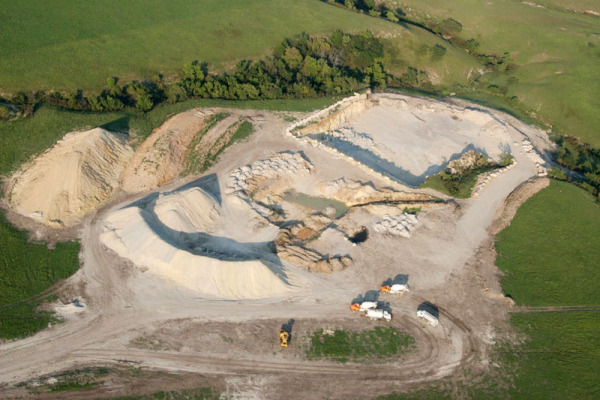
This picture shows the construction of a wind turbine project in Kansas.
Let's look closer..... 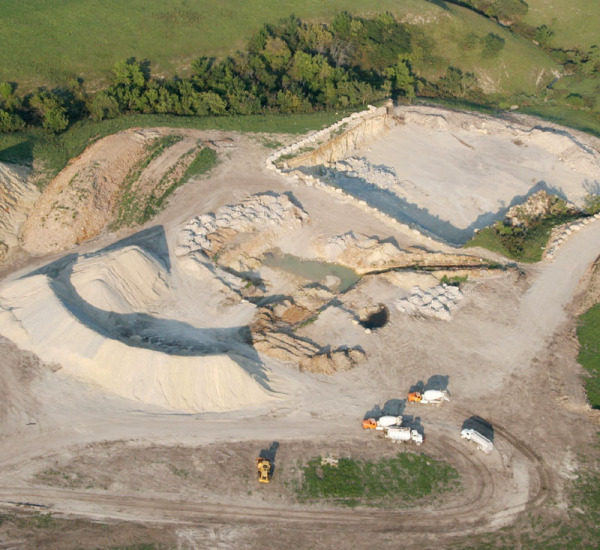
You should know how much of your land will be used during the construction phase and for how long, if you have any say at all in where the turbines will be sited, where the cables will be laid, and where the access roads will go. Only an independent lawyer can tell you what the contract says about this.
Look closer-
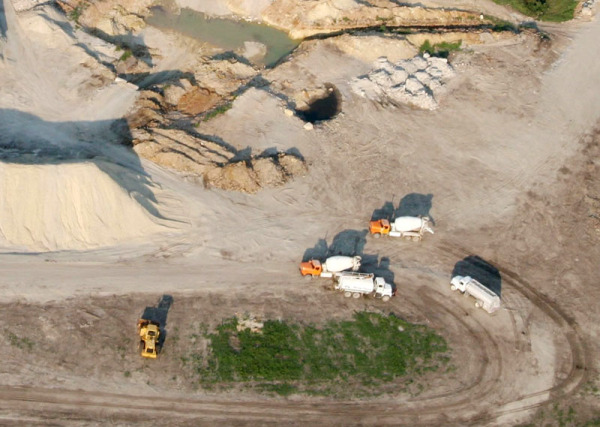
You should know that contracts may give the lease holder the right to go over, under, upon, along, and across your land, 24 hours a day, 7 days a week for the next 20 to 30 years. You should know what your rights are if changes, disputes or problems arise, and by what means problems may be resolved. An independent lawyer can tell you this.
Look closer..
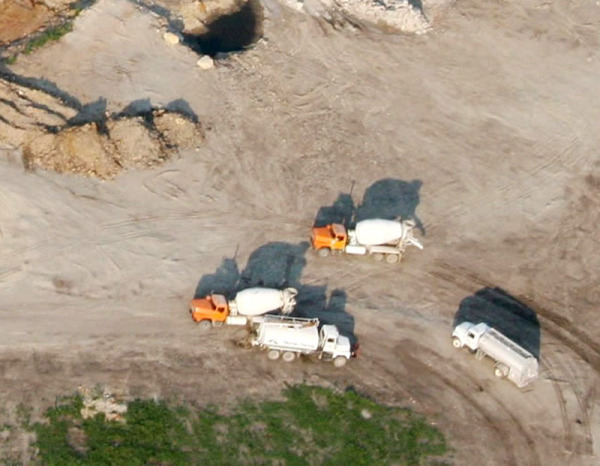
You should know that most lease agreements will be legally binding not just to you, but to your kids, any heirs, any future buyers, successors, executors, or assignees of any kind. You should know that most lease agreements require that ANYONE who owns the land after you or wishes to buy the land from you, will be also legally bound by the terms of this contract. Only an independent lawyer can tell you exactly what this means to the future of your property.

(To see more of this series of construction photos taken in Kansas, click here.)
9/2/10 Show me the safety net: PSC commissioner Lauren Azar's letter to legislators AND Show me the green jobs: Wisconsin wind employment figures wither under scrutiny AND What to expect when you're expecting 497 foot tall turbines: Construction begins on Wind Siting Council Member Bill Rakocy's new wind farm AND a letter from Maine that could be from Wisconsin
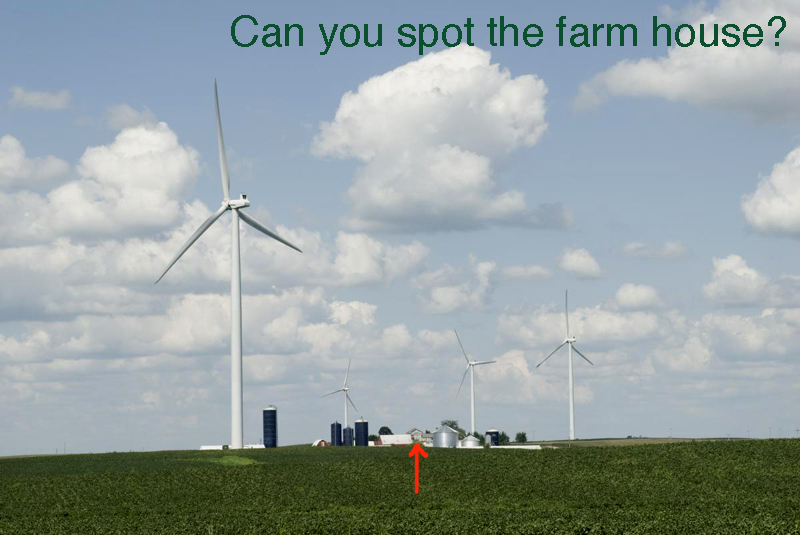
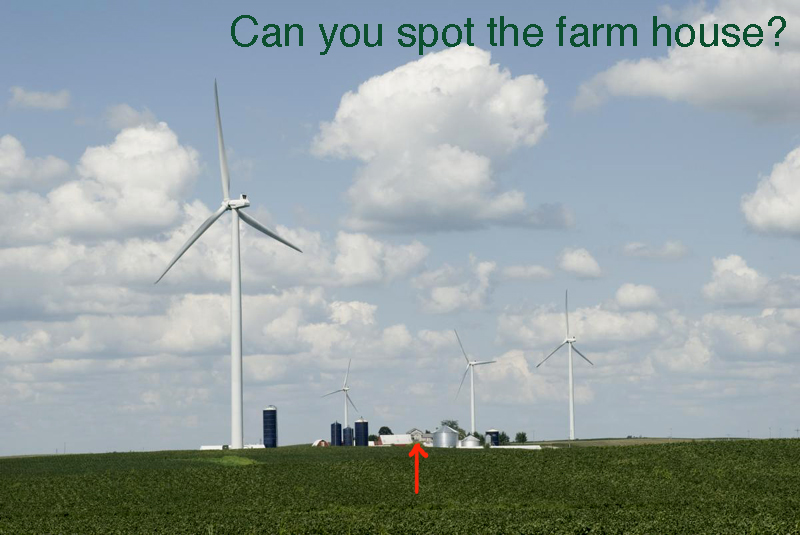
Wind turbines on a Wisconsin Farm
While I support the overall rule because it will promote the development of wind in Wisconsin, the rule fails to provide a much-needed safety net for people whose health declines because of a Wind Turbine located near their home.
-PSC Commissioner Lauren Azar
CLICK HERE TO DOWNLOAD THE FINAL WIND RULES FROM THE PUBLIC SERVICE COMMISSION
SOURCE: PSC DOCKET # 1-AC-231
From PSC commissioner Lauren Azar
To The Honorable Fred Risser The Honorable Michael Sheridan
The State Senate The State Assembly
State Capitol, Room 220 South State Capitol, Room 211 West
Madison, WI 53702 Madison, WI 53702
Re:Wind Siting Rules, Clearinghouse Rule 10-057
Dear Senate President Risser and Speaker Sheridan:
I write to explain my concurrence with the Commission’s rule on the siting of certain wind energy systems (Wind Turbines) in Wisconsin.
While I support the overall rule because it will promote the development of wind in Wisconsin, the rule fails to provide a much-needed safety net for people whose health declines because of a Wind Turbine located near their home.
The safety net I propose would be a minimal burden to wind developers while simultaneously protecting Wisconsin citizens who are sensitive to the noise emitted from Wind Turbines.
Among other things, 2009 Wisconsin Act 40 requires the Commission to develop rules that “provide reasonable protection from any health affects” associated with Wind Turbines. Wis. Stat. § 196.378(4g)(b).
There is substantial evidence that noise from Wind Turbines could negatively impact the health of a small percentage of the population.
To better ensure compliance with Act 40’s mandate, I proposed the following safety net: under limited circumstances, the owner of a Wind Turbine must purchase, at fair market value, the home of someone who can prove that a nearby Wind Turbine is directly causing a significant adverse health outcome. [1]
Unfortunately, at this time, we cannot accurately identify the precise line between safe levels of noise from Wind Turbines and those levels that will negatively affect human health.
Nor do we know why a small percentage of the population is affected more negatively by Wind Turbines than the rest of the population.
As new information becomes available, the Commission can revise this rule.
While more study is needed to better understand the full health impacts of Wind Turbines, it is important that we establish some remedy for the people who can prove that their health is being compromised by nearby Wind Turbines before the Commission has an opportunity to revise this rule.
To be clear, this safety net does not include awarding damages to the injured party; instead, it allows the injured party to move quickly from the area, thereby abating health concerns.
The safety net would be limited to landowners who provide evidence (in the form of a certification) from a licensed Wisconsin medical doctor that one or more Wind Turbines have directly caused a significant adverse health outcome on the injured party.
The only impact to the owner of the Wind Turbine(s) would be the need to resell the house.
Hence, the proposed safety net would not be an onerous requirement on the Wind Turbine owner and should not hamper wind development in Wisconsin.
The safety net could be structured as follows:
“PSC 128.XX Individual Hardships. If the owner of a nonparticipating residence experiences adverse health outcomes that are shown to be the direct result of the operation of a wind energy system, the owner of the nonparticipating residence may petition the political subdivision for mitigation of the adverse health outcomes.
The petition for mitigation shall be referred to the Commission, which may order mitigation of the adverse health outcomes.
A medical doctor licensed in the State of Wisconsin shall attest that that one or more wind turbine(s) have caused a significant adverse health outcome on the injured party before any relief may be granted under this section.
Mitigation may include requiring the owner of the wind energy system to purchase the nonparticipating residence at fair market value.
Note: The Wind Siting Council may make recommendations with respect to the form and type of information that is required to show that adverse health outcomes are the direct result of the operation of a wind energy system.
Absent a safety net provision like this, it is unclear how an injured party could obtain mitigation of adverse health outcomes from a Wind Turbine owner.
If they are unable to sell their property for fair market value, injured parties would be forced to file suit against the owner of a Wind Turbine.
This could require the injured party to incur significant legal costs that are not recoverable in a lawsuit and may dwarf the value of the home.
The State of Wisconsin should not place its citizens in this position.
In conclusion, while I concur with the rule as a package, I remain concerned that this rule fails to protect the most vulnerable of our community and, therefore, I must qualify my support of this important rule. When this rule is referred to the appropriate standing committees, please forward a copy of this letter with the rule.
Sincerely,
Lauren Azar
Commissioner
[1] The operation of this safety net proposal is not unprecedented. The Commission recently identified that the purchase of property at fair market value was a potential remedy for two landowners affected by a large wind energy development. Because the two landowners had a significant number of Wind Turbines within view from their homes, the Commission required mitigation, including the possibility that the utility purchase the properties at fair market value. The utility did not object to this potential remedy and has since purchased the properties.
SECOND FEATURE
In Wisconsin, Facts About ‘Green Job’ Creation Elusive as the Wind
SOURCE MacIver News Service | September 1, 2010
By Bill Osmulski
MacIver News Service Investigative Reporter
[Madison, Wisc...] Although they are touted and promoted by policy makers and opinion leaders across the state, accurately defining and keeping track of ‘green jobs’ has proven nearly impossible in Wisconsin.
Take, for example, ‘green jobs’ associated with the wind industry.

Wisc. Governor JimDoyle (D)
“Clean energy technology and high-end manufacturing are Wisconsin’s future,” Governor Jim Doyle said in his final State of the State address. “We have more than 300 companies and thousands of jobs in the wind industry.”
That statistic is impossible to verify.
The State of Wisconsin does not track those companies nor the jobs within the industry.
When contacted, the Office of Energy Independence (an agency created by Governor Doyle in 2007) directed MacIver News to Wisconsin Wind Works, a self-described “consortium of manufacturers representing the wind manufacturing supply chain within Wisconsin.”
The advocacy group maintains an online wind energy-related supply chain database, although a routine examination of the data proved just how unreliable the figures are.
When the online, searchable database was utilized earlier this summer, it listed 340 companies in Wisconsin connected to the wind industry, a fact which, without additional investigation would appear to be in line with the Governor’s statement.
However, further examination showed many of those companies were not currently serving the wind industry and were only listed because they someday could serve the wind industry.
For example, the database listed 38 manufacturers, but only 24 of them have anything to actually do with the wind energy sector presently.
Of those 24 Wisconsin manufacturers, only eight were categorized as primary suppliers.
Another four companies were listed as both primary and secondary suppliers. A MacIver News Service reporter contacted all eight primary suppliers and the four companies listed as primary/secondary suppliers in our initial query and what we found further eroded the credibility of Governor Doyle’s claims.
When contacted, the companies listed as both primary and secondary suppliers all described themselves merely as secondary suppliers. That means they produce products that are not exclusive to the wind energy.
For example, Bushman Equipment manufactures lifts that move heavy pieces of equipment, which, among many other uses, can be used to handle wind turbines.
Wisconsin Wind Works’ database is not only generous with the number of companies within their supply chain it associates as being primary suppliers, there are issues with the actual job numbers listed for each company as well.
Many of the figures are either inflated, the jobs are not located in Wisconsin, or they cannot be tied to wind energy.
For example, Rexnord Industries was one of the eight Wisconsin manufacturers listed in our query as directly serving the wind energy industry. The database shows the company has 6,000 employees.
Yet a Rexnord official told the MacIver News Service that the company only has 1,500 employees in Wisconsin, and only five of those have jobs which are directly tied to the wind industry.
Wisconsin Wind Works’ database says Orchid International has 600 employees, but a company spokesperson told MacIver it only has 150.
Amsoil Inc. in Superior has 236 employees listed in the Wisconsin Wind Works database, but a company representative told the MacIver News Service that only 6 of them work on wind energy-related products.
In all, at the time of our search, the database claimed 7,632 jobs among the eight manufacturers that were current primary suppliers to the wind industry. Yet, the MacIver News Service was only able to identify 31 jobs at those companies which were specifically tied to wind energy related products.
Manufacturers told MacIver News that other employees might work on wind-related products occasionally, but it does not represent the bulk of their workload.
Another 1,077 workers are listed among the secondary suppliers and we did not investigate that claim.
VAL-FAB, one of the companies listed as both a primary and secondary supplier, explained to MacIver News that it initially had high hopes for the wind energy industry that never materialized. The company specializes in fabrication for the energy sector.
William Capelle, Director of Business Development at VAL-FAB, said “At first we thought we might be able to manufacture the actual towers, but it turns out 90 percent of those are imported from Spain.”
Since the MacIver News Service first examined the Wisconsin Wind Works database, the number of companies listed has increased to 360.
A reporter attempted to contact the organization for comment about the veracity of their data, but Wisconsin wind Works, which solicits members by selling itself as the
“preferred partner of wind energy professionals,” did not respond.
They are, however, holding a Wind Energy Symposium in Milwaukee on October 13th.
Meanwhile the Office of Energy Independence continues to pursue the Doyle Administration’s green energy policies.
As Doyle said during his final State of the State address, “anyone who says there aren’t jobs in the clean energy economy had better open their eyes.”
There is no doubt that some jobs in the wind industry exist in Wisconsin. The accurate number of these ‘green jobs’ is proving to be, at best, elusive
Representatives of Doyle’s office did not respond to repeated request for comments regarding the information contained within this article.
THIRD FEATURE
What to expect when you're expecting wind turbines close to 500 feet tall:
Photos from the Town of Glenmore in Brown County Wisconsin
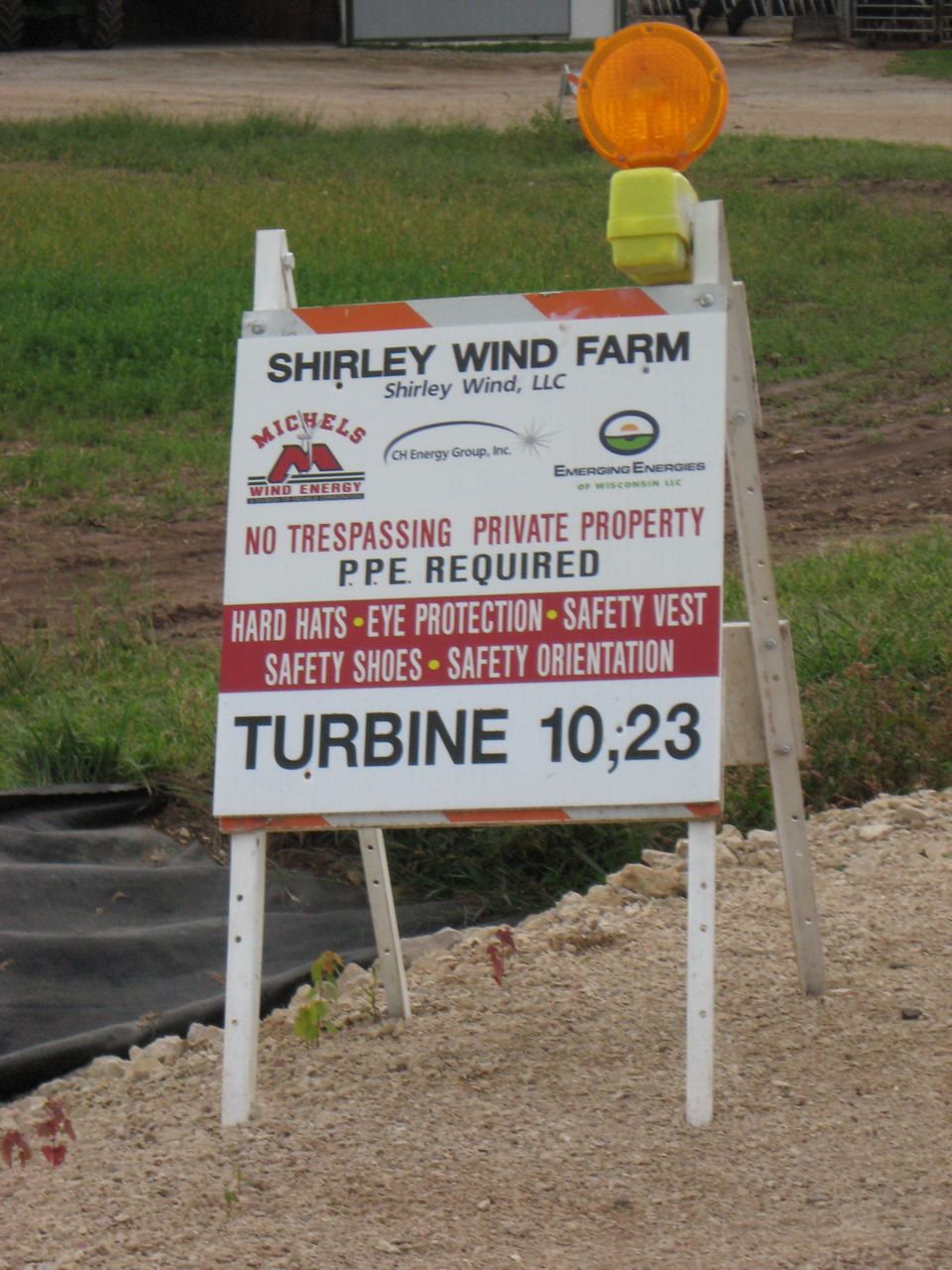

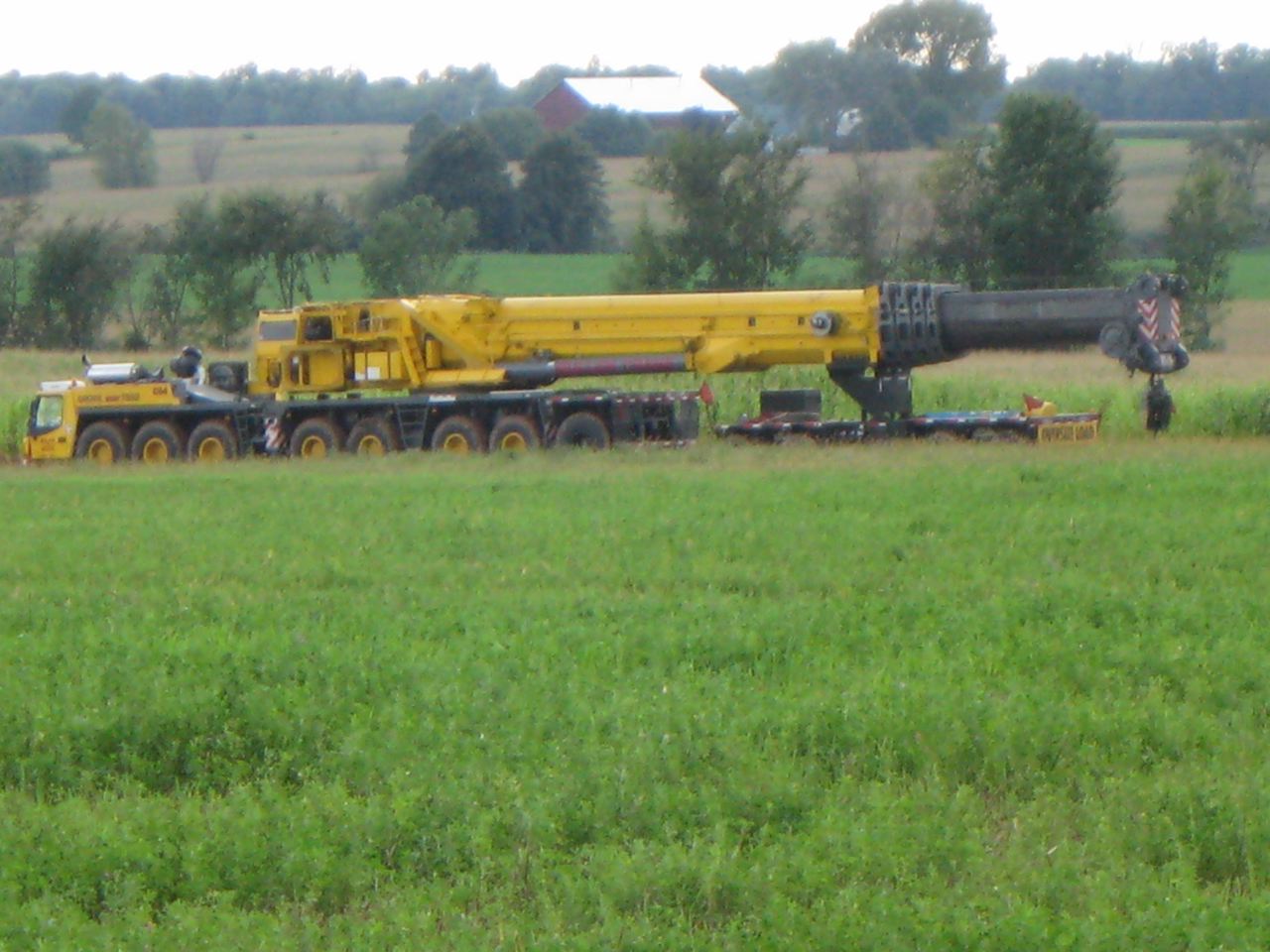
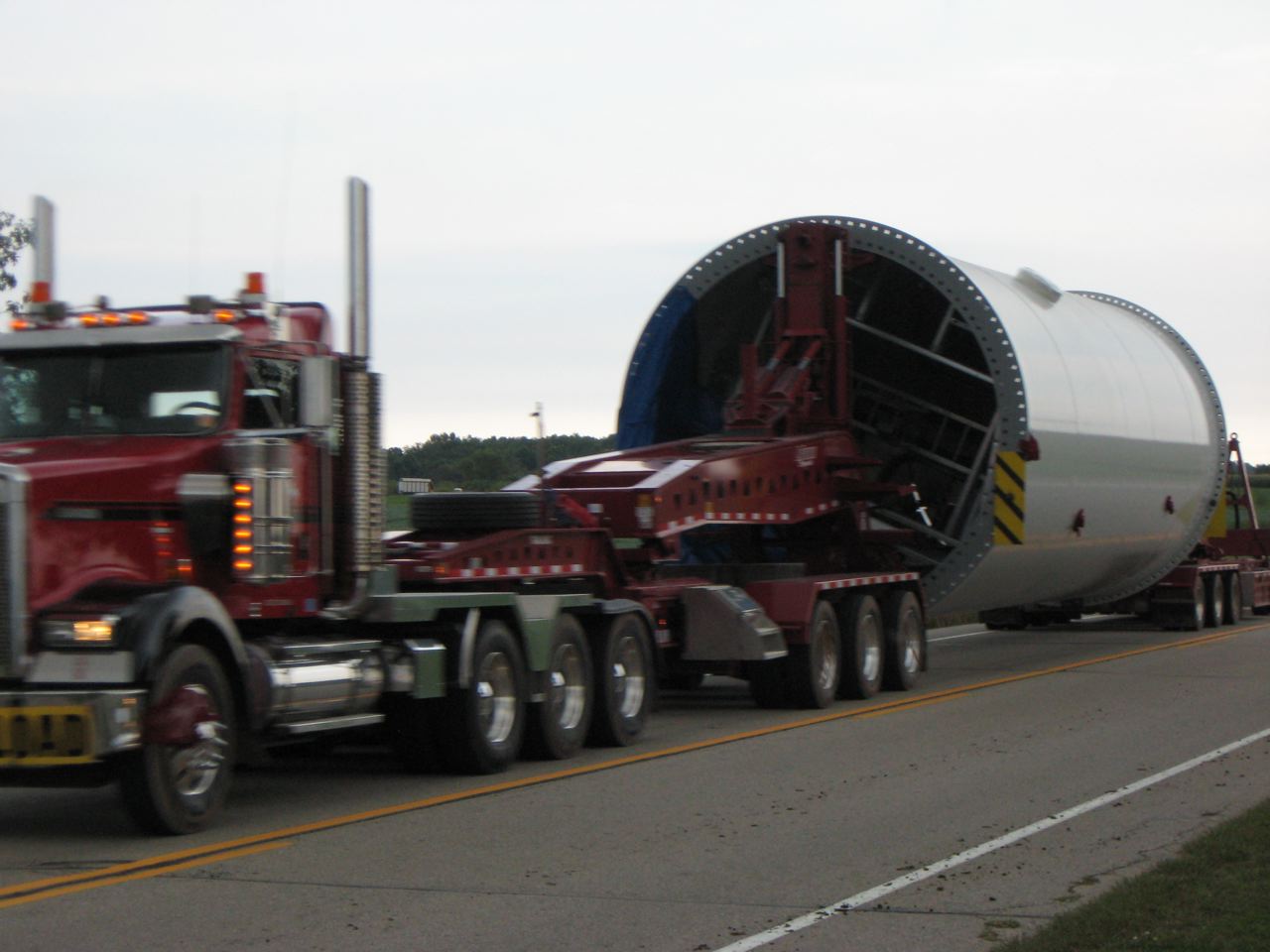
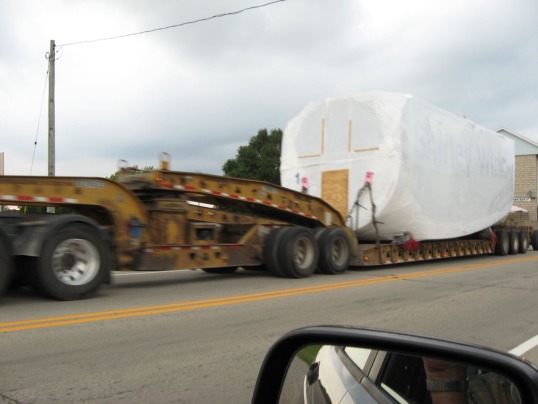
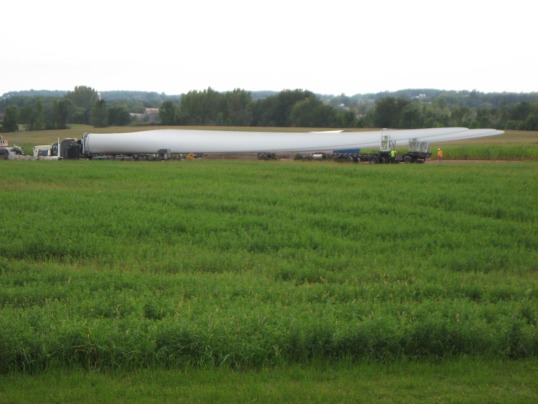
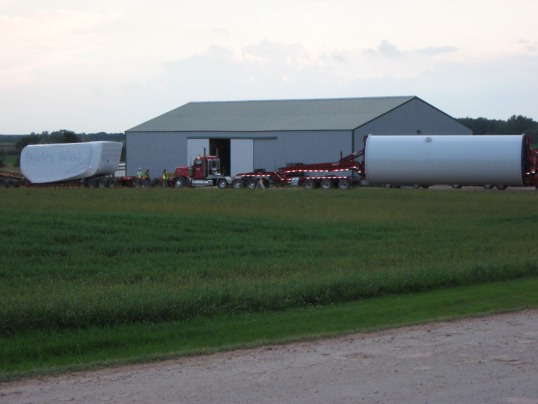
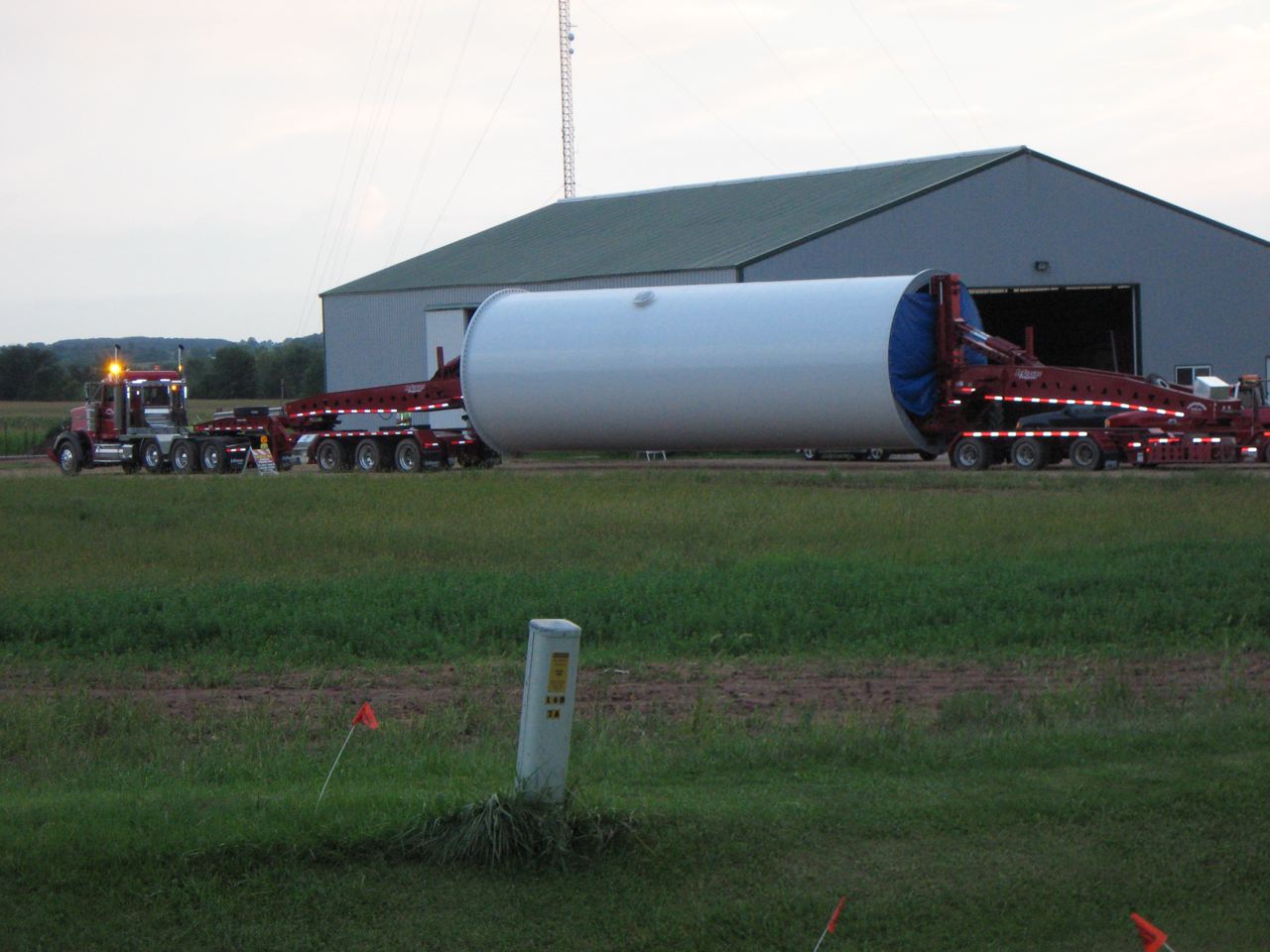

Construction underway on Brown Co. wind farm
8 turbines in Town of Glenmore
TOWN OF GLENMORE - Construction is underway on Brown County's first industrial wind farm. Eight wind turbines are being built in the Town of Glenmore in southern Brown County.
The developer, Wisconsin-based CH Shirley Wind, LLC, says construction is to be completed by the end of the year. The 8 wind turbines are expected to generate enough power to supply approximately 8,000 homes per year.
The wind turbines will stand 492 feet tall.
"We are hoping to generate power by the end of September on at least one turbine. Hopefully all 8 by the end of October," said John Roberts, the construction manager for the project.
The turbines will also provide some extra income for the four families hosting them on their properties.
"They're not just doing it for the money. They like the idea of being green and using their farm for something like this," said Roberts.
Though, like most wind developments, a number of neighbors aren't too happy with the project.
"The projects right now, with the setback rules we have, are just too close for people to live in that proximity to an electrical generator of that size," said Jamie Fletcher, who lives in the Town of Glenmore.
Fletcher has been working to stop all large-scale wind development in southern Brown County. She believes wind turbines cause health problems, mainly from all the noise they make.
"Insomnia, shadow flickers, causing everything from nauseasness to epileptic seizures and I don't want to put my family through that or my animals," said Fletcher.
However, a state committee that studied the issue recently found no health effects from the turbines. Those working on the project in Glenmore also say the turbines being built there have new technology that make them less noisy.
"They're a little bit higher and they turn a little bit slower and because they turn slower, there is actually less noise," said Roberts.
The Shirley Wind project is not part of a highly publicized proposal to build 100 wind turbines in several Brown County communities. That proposal, known as the Ledge Wind Energy Project, has not been voted on yet by the state Public Service Commission. It is being developed by a Chicago-based company called Invenergy.
Opponents, like Jamie Fletcher, say the 8 turbine project in Glenmore will be an example of why other projects should be stopped.
"Whatever happens out here, I pray it's a wake-up call for the rest of the state," she said.
Both sides will continue to debate whether wind development is what is best for Wisconsin.
THIRD FEATURE: A LETTER FROM MAINE:
Note: Like Wisconsin, Maine also passed law that streamlines wind siting for developers by removing local control and relaxing restrictions. Here is what Maine residents are saying two years later:
Though I’d suspected the news would eventually arrive, I still wasn’t ready when I got it.
Word came recently that a wind speed test tower, the harbinger of a future wind turbine development, would soon be erected just north of my property in Lexington Township.
Two more associated towers are to be located in Concord, the next township to the east.
My town is now among the unfortunate that have been infected with the virus of wind-energy sprawl. Industry activity, lately, has been substantial in our area and our town lies within the new expedited permitting zone. It was bound to happen.
I’ve been working to stop wind-sprawl on Maine’s rural landscape for almost a year.
However, until now, I’ve not known the full complement of the frustration, indignation and betrayal felt by so many Mainers seeing their lives turned upside down by the reckless and uncaring intrusion of this industry on their homes and property — all with the complicity of our state government.
I have worked beside many of these people for months, but only now do I fully understand their perspective.
My wife and I believed we’d spend the rest of our days in Lexington, living simply, and feeling fortunate to be surrounded by Maine’s unique beauty and the increasingly rare silence of a rural land.
The governor and Legislature, however, sealed our fate in 2008 when they gifted the wind industry with easy permitting terms for a scheme that is unlikely to produce benefits greater than what will be stolen from present and future generations.
Under the new laws, property owners have been left with little power to protect themselves. I will, nevertheless, continue to fight this industry’s assault on rural Maine, perhaps, with a keener awareness of what we stand to lose.
Alan Michka
Lexington
8/22/10 What to expect when you're expecting wind farm construction AND what do wind tubines sound like?
WHAT'S THE PROBLEM?
Click on the image below to hear the noise from a wind turbine 1100 feet from a home in the Invenergy Forward wind project in Fond du Lac County, Wisconsin. Because of the noise, this home is now for sale.

